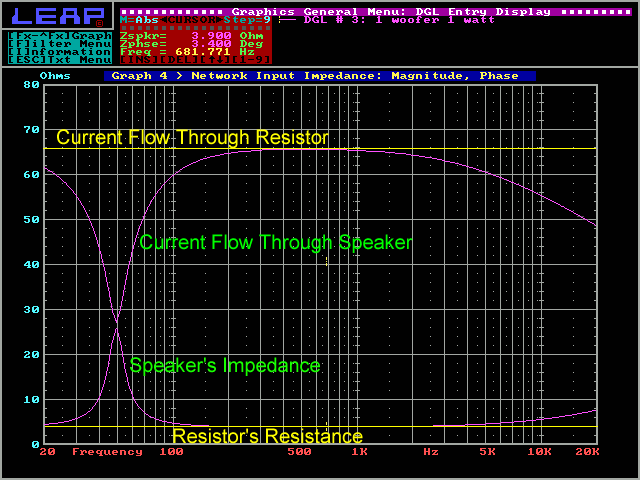The diagram below may give you some idea of the difference between the current flow through a resistor and the changing current flow through a speaker. Keep in mind that the resistor's resistance will not change (significantly) as the frequency changes (as indicated by the lower yellow line). The current through the resistor will also remain constant (as shown by the upper yellow line). You will notice that as frequency changes, the impedance of the speaker changes. As the speaker's impedance increases the current flow decreases. The voltage applied to the resistor and speaker remains constant across the audio spectrum. I will explain speaker impedance in more detail on upcoming pages.

- Plotting a Speaker's Impedance:
- To measure a speaker's impedance you can use a device called an impedance bridge which compares the impedance of the speaker to a reference resistor. Some impedance bridges only work at 1 or 2 frequencies and wouldn't be good for plotting impedance across the bandwidth of the driver (speaker).
- You could use a tone generator, an amplifier, digital voltmeter and a resistor to calculate the impedance of the speaker but that is time consuming.
- There are also computer programs that allow you to measure a speaker's impedance across the audio spectrum with your computer. 'Liberty Audio Suite' and Leap/LMS fromLinear-X are 2 of the top packages.
- Parts Express has a device that's supposed to work well (I haven't used one yet). It costs about $US100. This is a link to it.
The crossover slope II page has more impedance plots if you're interested.
No comments:
Post a Comment